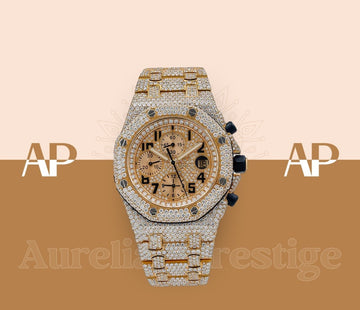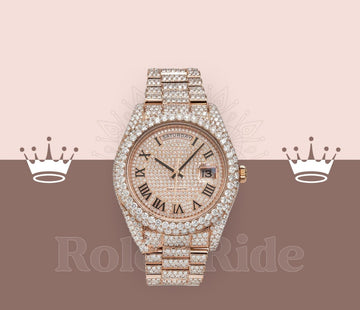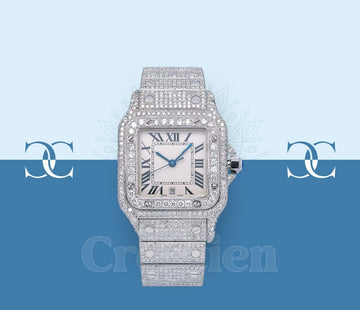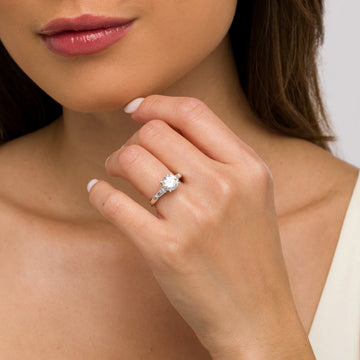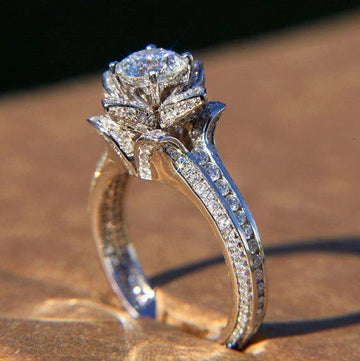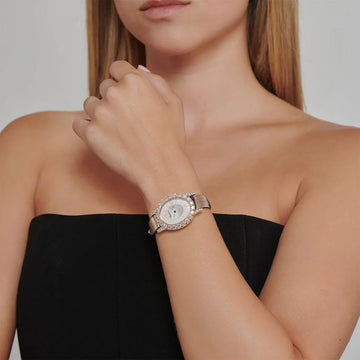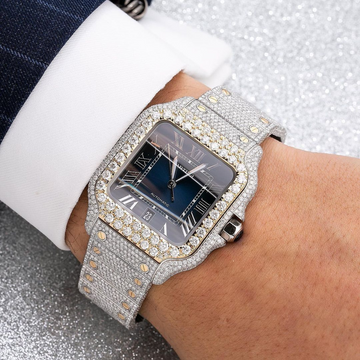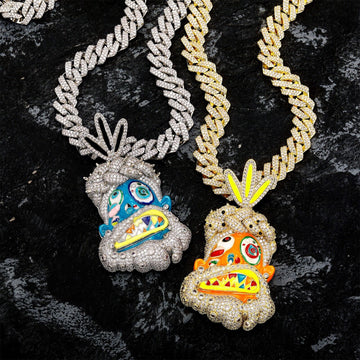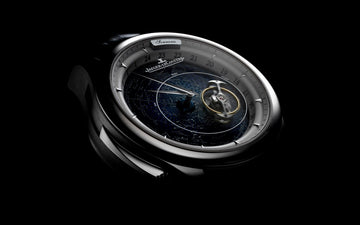Crafted Brilliance Lab-Grown Diamond Delights
Experience the allure of ethically sourced, lab grown diamonds at Heerok. Explore our exquisite collection of rings, pendants, and more. Find your perfect piece and radiate sophistication effortlessly.
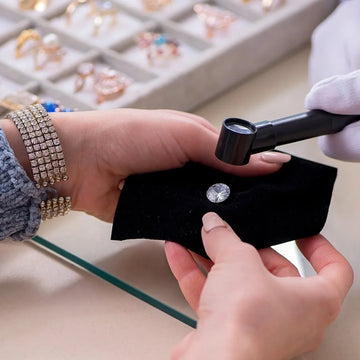
What Is A Diamond?
Diamond is a crystalline form of carbon, it is highly appreciated for jewelry because of its astonishing shine, classy look and durability. Diamonds are mined traditionally from the earth. They are naturally form under pressure & intense heat.
Meanwhile, these lab-grown diamonds are produced in a controlled environment that mimics the natural diamond-forming conditions, and they have the same physical, chemical, and optical making properties as natural diamonds. The production of lab-grown diamonds can be done at a lower cost and with a far lesser environmental impact than that of mined diamonds, as they are visually identical. Lab-grown diamonds are becoming a common option for customers who wish beauty and sustainability both in their diamond jewelry.
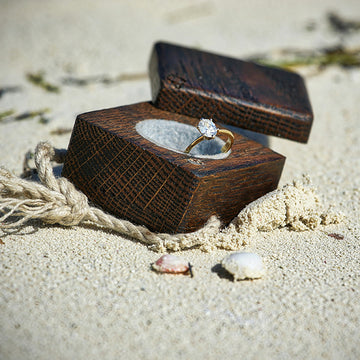
Diamond Hardness
Hardness of Diamond
Diamond is renowned as the hardest naturally occurring mineral on Earth. With a remarkable hardness ranking of 10 on the Mohs scale, a system devised in 1822 to gauge mineral hardness, diamonds stand unrivaled in their durability.
Ideal for Jewelry
This inherent robustness makes diamonds exceptionally well-suited for everyday wear, rendering them an ideal choice for various jewelry pieces, including engagement rings.
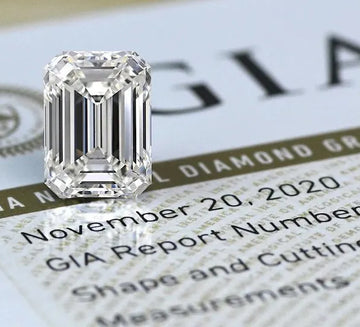
Diamond Certifications: Providing Trust and Ensuring Purity
For lab-grown diamond jewellery to be honest and high-quality, guarantees are necessary. These guarantees validate the diamonds' qualities and origin, giving purchaser confidence in their gaining.
Cut, carat, color, and clarity—the four Cs—are primarily measured to confirm lab-grown diamonds. They also offer information about the diamond's source and manufacturing method to authenticate that the pebble is lab-grown.
Clients who buy certified lab-grown jewellery can make educated decisions; meanwhile, they recognize they are buying high-quality, morally obtained diamonds.

Shape Your Brilliance: Diamond Designs for Every Dream
Respects the variety of diamond shapes, each exactly created to satisfy your needs. You can select a diamond shape that matches your unique style and aims, even if you are looking for the eternal beauty of a round brilliant, the modern appeal of a princess cut, or the classic magnetism of a cushion cut.
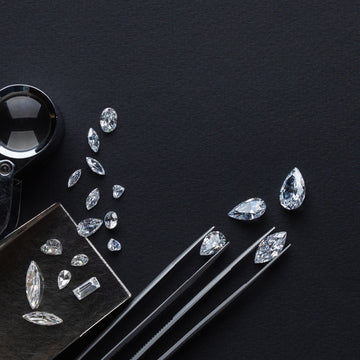
Diamond Grading Scale
Cut: The cut of a diamond refers to its proportions, symmetry, and polish, which directly influence its brilliance, fire, and overall visual appeal.
Color: The GIA grades diamond color on a scale from D (colorless) to Z (light yellow or brown), with each letter representing a specific level of color saturation.
Clarity: Clarity measures the presence of internal and external flaws, known as inclusions and blemishes, within a diamond.
Carat Weight: Carat weight refers to the mass of a diamond and is a significant factor in determining its size and perceived value.
More Guide
Frequently Ask Question
What are the different movements in watches?
Watches typically feature three main types of movements: manual, automatic, and quartz. Manual movements require daily winding and are known for their traditional craftsmanship. Automatic movements self-wind through the wearer’s wrist motion, offering convenience without daily winding. Quartz movements, powered by a battery, provide superior accuracy and require minimal maintenance. Additionally, hybrid movements like kinetic and solar combine mechanical and quartz elements for enhanced functionality.
Which movement is best for watch?
The best movement depends on personal preferences. Manual movements are ideal for traditionalists who enjoy daily winding. Automatic movements offer convenience through self-winding. Quartz movements are perfect for those who prioritize accuracy and low maintenance. Each type has its advantages, and the choice depends on whether you value heritage, convenience, or precision in your timepiece.
How does a quartz movement work?
Quartz movements use a small battery as their power source. The battery sends an electrical current through a quartz crystal, causing it to vibrate at a consistent frequency of 32,768 times per second. These vibrations are then measured and converted into pulses, which drive the motor to move the watch hands. Quartz watches are known for their incredible accuracy, low maintenance, and affordability compared to mechanical or automatic watches.
Which type of motion is watch?
Watches utilize either mechanical or electronic motion. Mechanical watches, including manual and automatic, operate through gears and springs. Quartz watches use electronic motion, powered by a battery and a quartz crystal. Mechanical movements create a consistent ticking motion, while quartz movements offer high accuracy through precise vibrations.
How to choose a watch movement?
Choosing a watch movement involves considering your lifestyle and preferences. Manual movements suit those who appreciate traditional craftsmanship. Automatic movements are convenient, self-winding through wrist motion. Quartz movements prioritize accuracy and low maintenance. Consider factors like budget and desired features to select the best movement for your needs.
Which watch movement is most accurate?
Quartz movements are the most accurate, powered by a battery and a vibrating quartz crystal. They lose or gain only a few seconds per month. In contrast, mechanical movements, including manual and automatic, have variations of several seconds per day. Quartz watches are preferred for their superior accuracy.
What movement do luxury watches use?
Luxury watches predominantly use mechanical movements, including manual and automatic, due to their intricate craftsmanship. High-end brands often develop in-house movements, ensuring exclusivity and superior quality. While quartz movements are less common, some luxury brands offer high-end quartz models for unparalleled accuracy.
Which is better, quartz or automatic watch?
The choice between quartz and automatic watches depends on preferences. Quartz watches are highly accurate, low-maintenance, and affordable, requiring only periodic battery changes. Automatic watches are cherished for their craftsmanship and heritage, self-winding through wrist motion. Choose quartz for precision and convenience, automatic for traditional mechanical appeal.
Which watch movement is more expensive?
Mechanical movements, including manual and automatic, are generally more expensive than quartz movements due to intricate craftsmanship and complex engineering. Brands that develop in-house movements command premium prices. Quartz movements are simpler and cheaper to produce, making quartz watches more affordable, though high-end quartz models can be expensive.
How to tell if a watch is automatic?
To identify an automatic watch, observe the second hand’s smooth, sweeping motion, unlike the ticking motion of quartz watches. Check if the watch self-winds with wrist motion. Many automatic watches have a transparent case back to view the movement. Listen for a continuous ticking sound, different from quartz watches’ distinct ticks.






